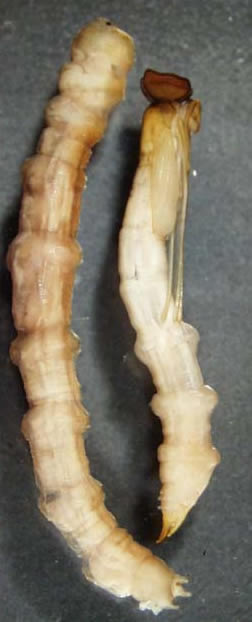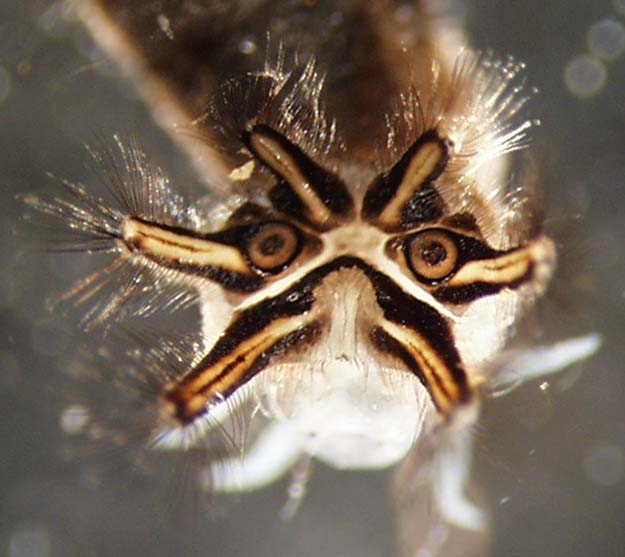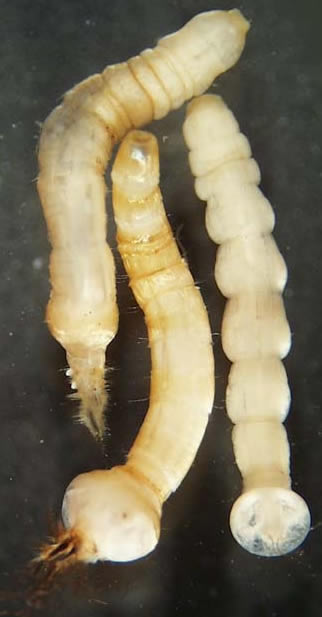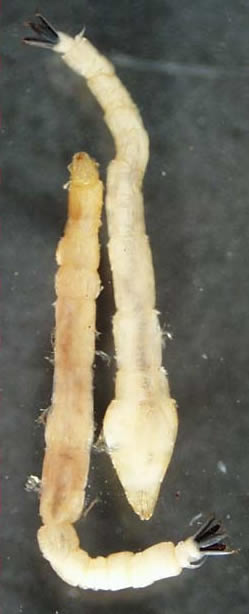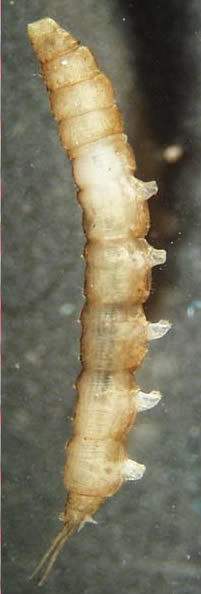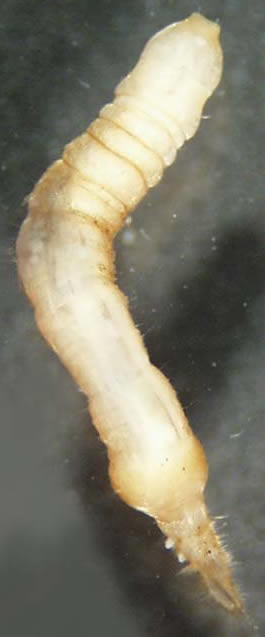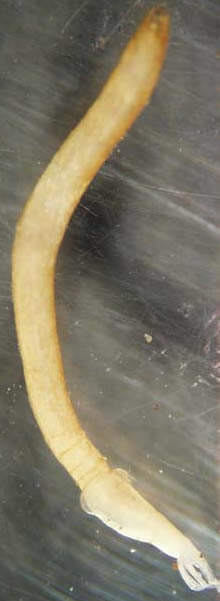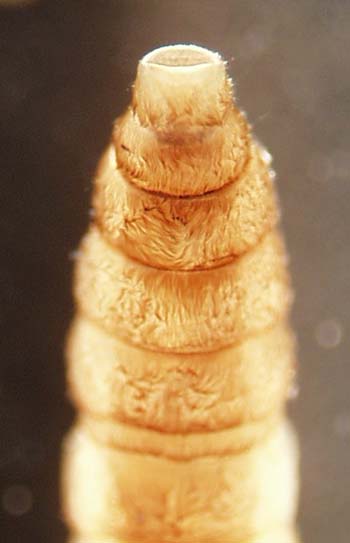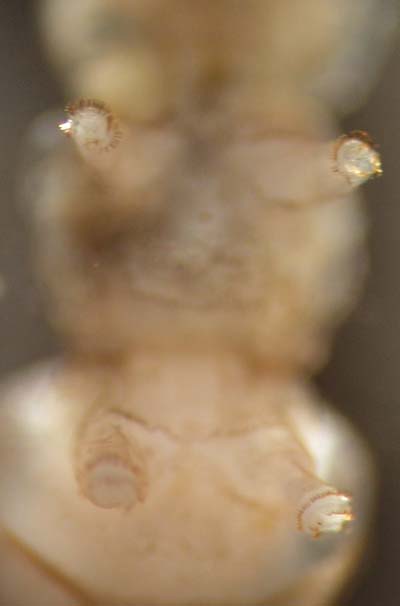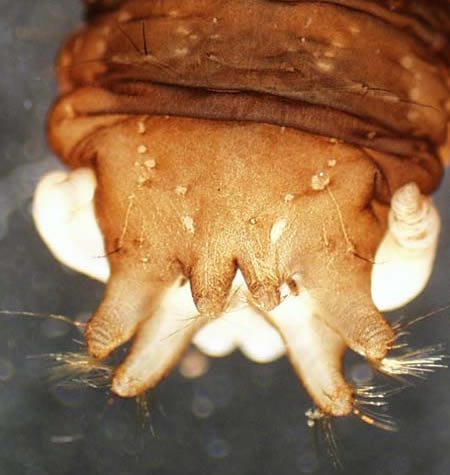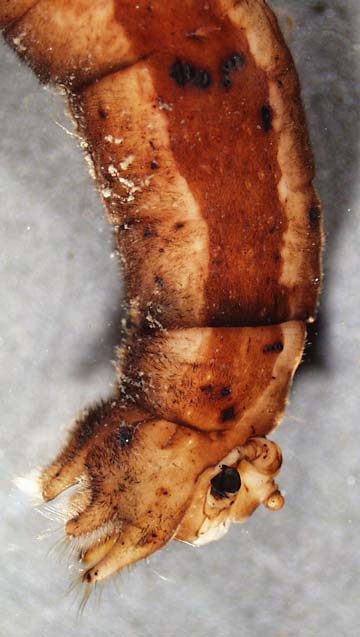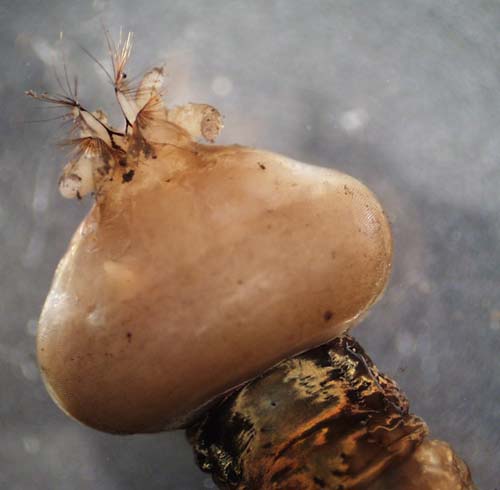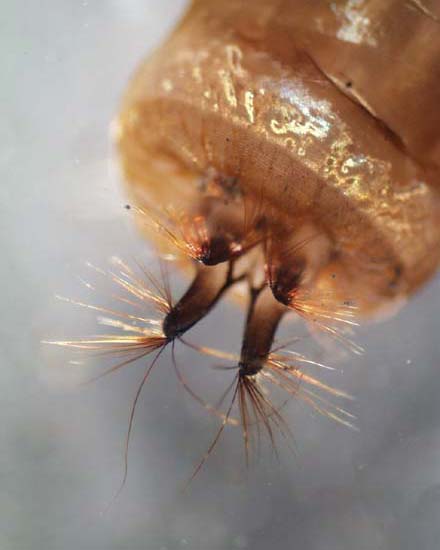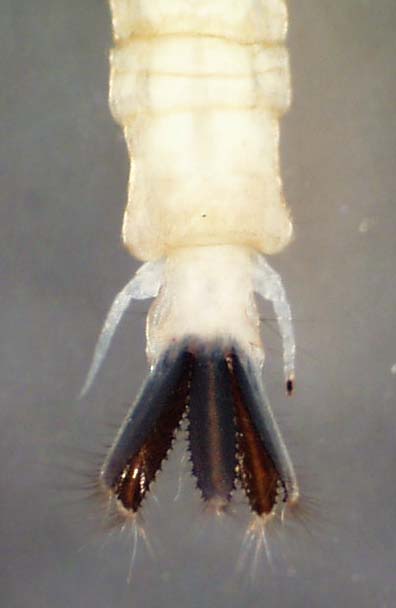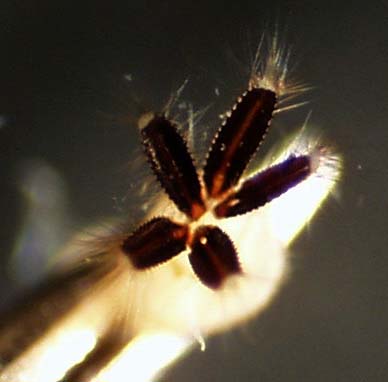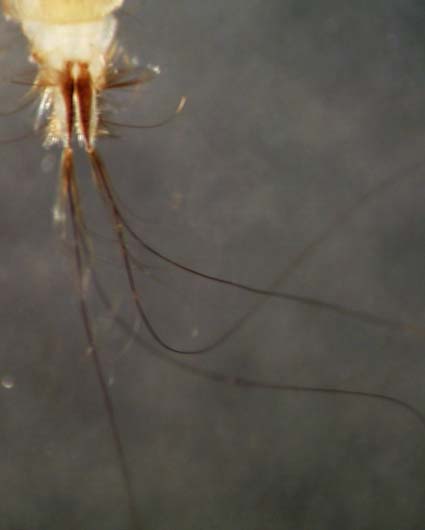
THE XERCES SOCIETY FOR INVERTEBRATE CONSERVATION Aquatic Invertebrates in Pacific Northwest Freshwater Wetlands |
| Identify taxa |
Tipulidae (crane flies) |
Tipulid larvae inhabit streams, ponds, bogs, and marshes, and are common in wetland habitats. They also inhabit a variety of terrestrial habitats. Many larvae are voracious predators in aquatic systems, where they can be quite common and become fairly large. This key to Diptera separates the Tipulidae from families with a clearly visible head. However, in most species of crane flies, if you tear a bit of skin off the front end of the larva you can see a fairly well-developed head. Some genera resemble other fly larvae (Dolichopodidae, Empididae, Tabanidae), but in all of those families the head is reduced to a few small dark rods visible under the skin. Tipulids have a well developed head, but it is less visible because it is retracted into the thorax. Crane fly larvae also have a soft, stout body with short, fleshy lobes at the end of the abdomen. Adult tipulids have a variety of common names, including mosquito dragon, skeeter eater, mosquito hawk, or crane fly. Adults resemble giant, long-legged mosquitoes, but they do not bite. |
Size: medium to large Identifying feature(s): no clear visible head; stout cylindrical body; short fleshy lobes at end of abdomen Habitat: most aquatic habitats, including wetlands Tolerance to pollutants: sensitive to tolerant |
 |
|
© 2007 Xerces Society
Contact info@xerces.org
